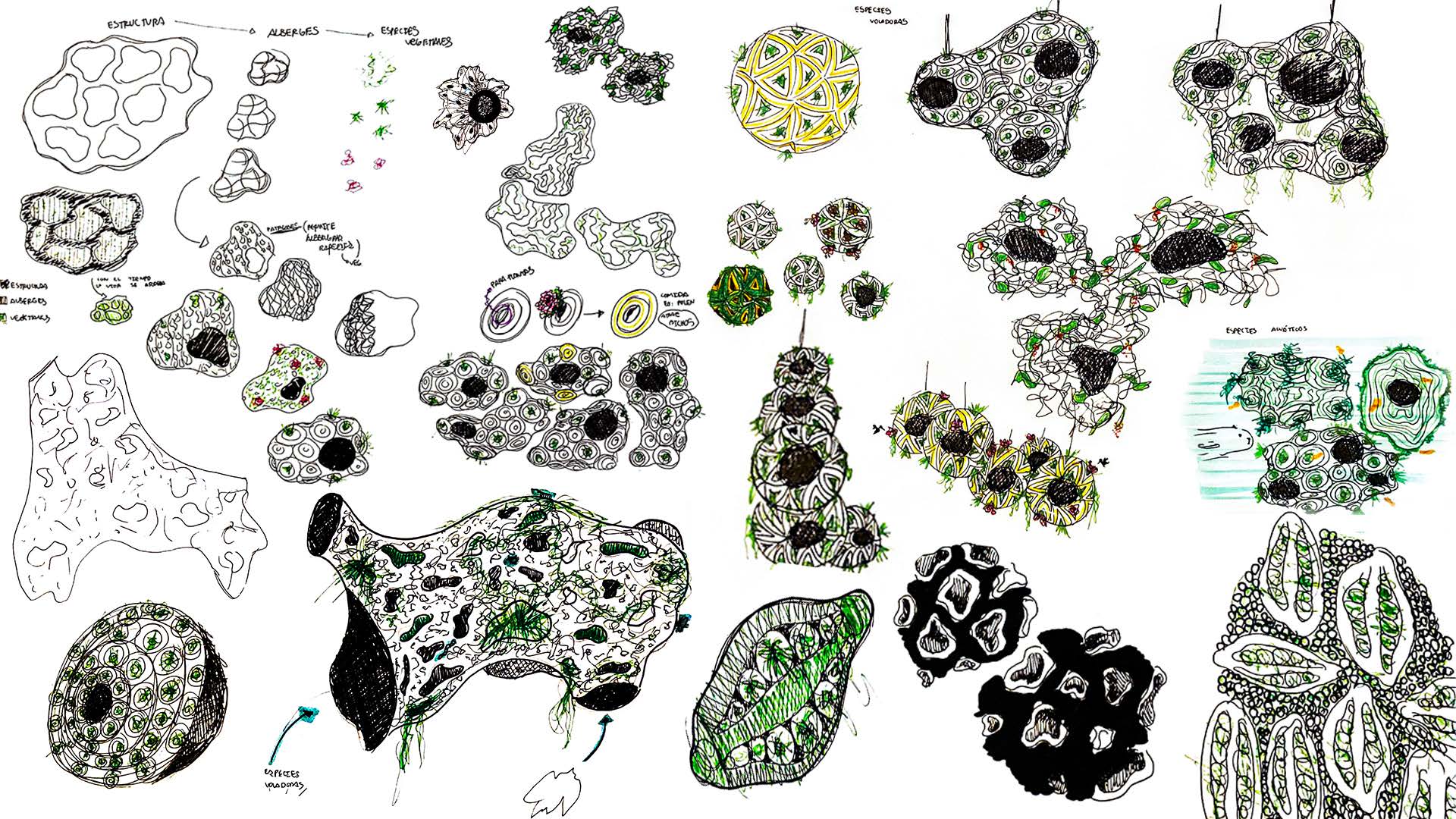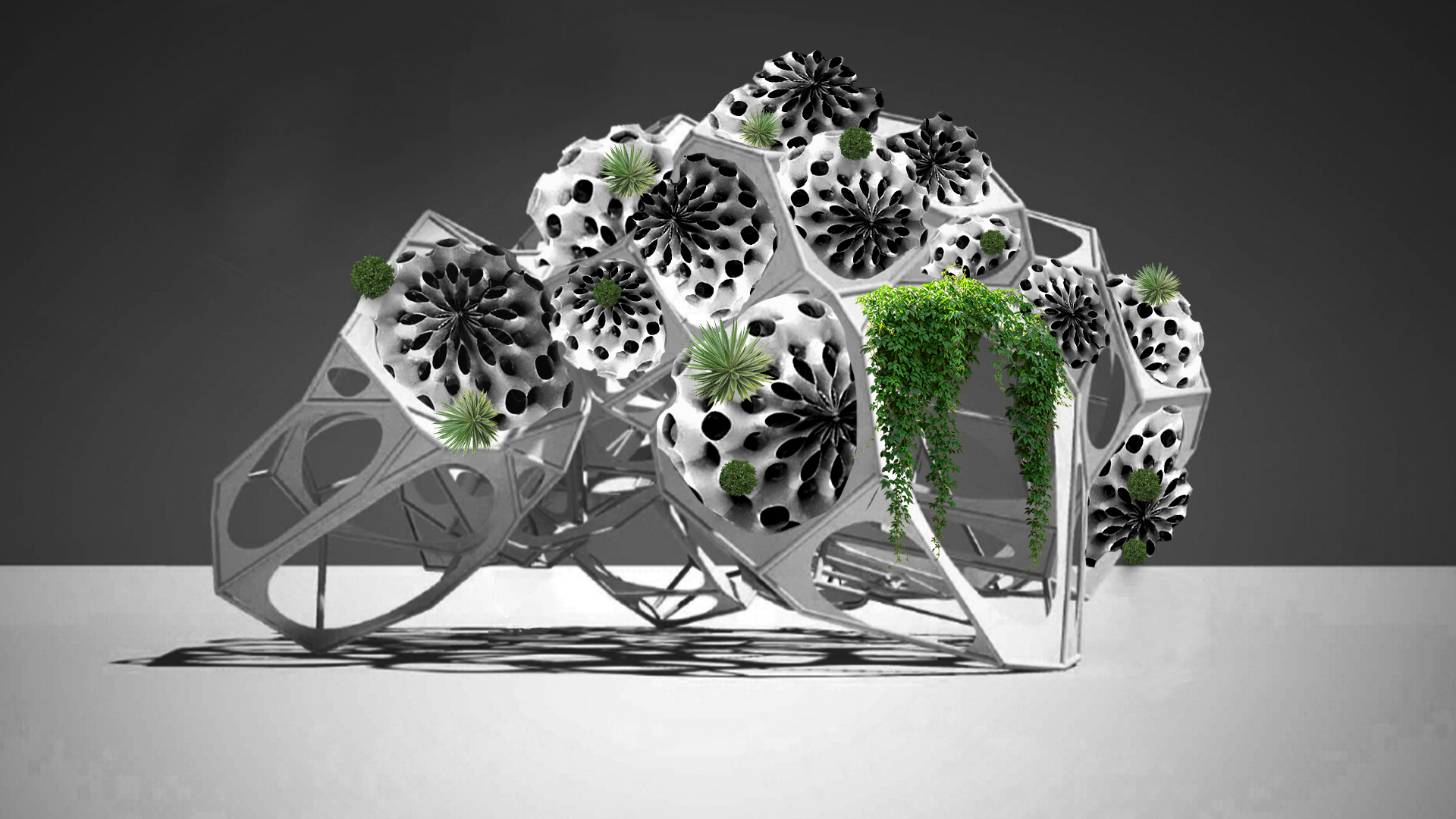Biophilic transition of Madrid
Basic information
Project Title
Full project title
Category
Project Description
The idea is to design ecosystemic structures where vegetal and animal species coexist within the city. These would be placed in adjacent areas to green spaces to make easier animal migration (mainly of insects and birds).
It is intended to gradually introduce more variety of species throughout the city to achieve a major beneficial cohabitation. This concept provides a much-needed socio-ecological education to survive and coevolve as a species.
Geographical Scope
Project Region
Urban or rural issues
Physical or other transformations
EU Programme or fund
Which funds
Description of the project
Summary
Urban spaces are dead because of the rejection of nature as our ally. Due to the social and environmental crisis, my proposal is based on the sanitation of the city through biodesign to revitalize, regenerate and reinvent our lifestyle as a community.
The idea is to design ecosystemic structures where vegetal and animal species coexist within the city. These would be placed in adjacent areas to green spaces, making easier the animal migration process (mainly of insects and birds). This allows the species to populate the structure at its will, leading to a more ethical revitalization.
Also, as community interaction is fundamental, there is a service design among the ecosystemic structure where the citizen is allowed to be part of the design process and maintenance of the structure. This decision was based on the necessity of improving the local attention on neighborhoods and making the citizens feel heard and included.
It is intended to gradually introduce more variety of species throughout the city to achieve a major beneficial cohabitation. That is why this is a long-term project. In a world where people get want they one and the exact moment they need, it is vital to understand that lifeforms have stages in their life cycles, and we can´t accelerate it.
This concept goes beyond design and helping the environment and species with the actual crisis because it also provides a much-needed socio-ecological education to survive and coevolve as a species.
Key objectives for sustainability
The strongest points about environmental sustainability are from the concern for biodiversity and how we are killing it to the solution of learning how to cohabit with it for mutual well-being.
From a strictly technical point of view, the influence of biomimicry and biofabrication throughout the project lead to a sustainable structure with new materials. Also, in terms of circularity, working with biomaterials for structure fabrication allows introducing a new way of developing products and also giving visibility of the benefits it brings.
Now, the fact of introducing species to the city entails endless benefits from an environmental point of view. For example, plants absorb carbon emissions and attract pollinators. Besides, pollinators contribute to the maintenance of ecosystem health, playing an important role in plant reproduction, carbon storage, and improving air quality.
Key objectives for aesthetics and quality
In respect of aesthetics, is intended to take inspiration from natural forms, shapes, and systems, elevating them to a much more complex design process. With the help of computational design, we can design structures as complex as nature and allude to the user to understand what is this product without knowing exactly what it is. I believe it could be the beginning of a new design era, where design, biology, and technology meet.
This aesthetic would not only help the user but also the species. Recreating their habitat through design allows them to facilitate the adaptation process, given that it is a design thought by humans and not by nature.
From the user's point of view, being surrounded by environments rich with nature and natural experiences will help promote important values. Exposure to nature, for instance, will likely help strengthen commitments to sustainability and living a more sustainable life.
Key objectives for inclusion
The service design for this project is allowing citizens to be the designers of their neighborhoods. We are used to institutions making decisions about how we should structure our living area when I believe there are better and more inclusive ways of doing it. For example, imagine that citizens have the opportunity to choose which plants and flowers they can grow in the ecosystemic structure, or even better, they get to choose where to put this structure. Little acts of design can improve the relationship people have with institutions.
There is also the opportunity to include neighbors in the process of preservation of the structure and the species living in it (mainly the vegetal ones).
Physical or other transformations
Innovative character
In the urban epoch, we need creative urban design and planning that makes nature the centerpiece, not an afterthought. Many other aspects of community and environmental health are quite effectively addressed through this project. The concern for sustainability through biodiversity, the aesthetic given thanks to biomimicry and biofabrication, and the inclusivity given not only to humans through interactivity and social-environmental education for the community, but also the cosmovision of the project treating all species as equals.
The symbiosis of these three aspects gives place to the initiative of Madrid as a biophilic city.


